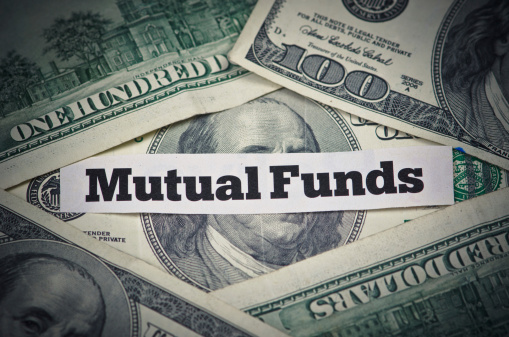12B-1 Funds: Benefits, Drawbacks, & Fee Avoidance
As an investor, you may have heard the term “12B-1 fund” but might not know exactly what it means or how it impacts your investments. This blog post will provide a comprehensive overview of 12B-1 funds, including their benefits and drawbacks. Additionally, we will examine why mutual funds have 12B-1 fees and how to avoid paying them.

Table of Content
- What is a 12B-1 Fund?
- Benefits of Investing in 12B-1 Funds
- Drawbacks of Investing in 12B-1 Funds
- Why Do Mutual Funds Have 12B-1 Fees?
- Difference Between a Mutual Fund Load and 12B-1 Fees
- What Do 12B-1 Fees Include?
- Why Should I Worry About 12B-1 Fees?
- How Can I Avoid Paying 12B-1 Fees?
- Do All Mutual Funds Have 12B-1 Fees?
- 12B-1 Fund FAQs
- The Bottom Line
What is a 12B-1 Fund?
A 12B-1 fund is a mutual fund that charges investors an upfront fee for marketing and distribution services. The purpose of these fees is to cover the costs associated with promoting and selling shares of the mutual fund. These fees are typically included in the prospectus and can range from 0.25% to 1% of the fund’s assets under management. The SEC regulates these fees and limits them to a maximum of 0.30% of total assets under management.
Benefits of Investing in 12B-1 Funds
One of the primary benefits of investing in 12B-1 funds is that they cover their expenses with the fees they charge. As a result, these funds tend to have more stable net asset values (NAVs) than other types of mutual funds that require additional capital injections from investors to pay for marketing costs. [1]
Additionally, investors who use a broker or financial institution that charges 12B-1 fees typically receive more personalized service than those who go through no-load mutual funds or direct purchase plans.
Finally, investing in 12B-1 funds can provide transparency about how fees are allocated among various activities, such as advertising and research.
Drawbacks of Investing in 12B-1 Funds
While there are benefits to investing in 12B-1 funds, there are also some drawbacks. The fees can add up over time and eat into your returns, so monitoring them is essential.
Finally, some argue that 12B-1 funds give too much control over investment decisions to financial advisors who may not always act in their client’s best interests.
Why Do Mutual Funds Have 12B-1 Fees?
Mutual funds have 12B-1 fees to cover their marketing, advertising, and distribution expenses. These fees help cover costs such as advertising campaigns, broker commissions, sales incentives for financial advisors, investor education materials, and other expenses related to buying and selling these investments. By charging these fees, mutual funds can remain competitive with other financial products while providing investors access to professional asset management services. [2]
What is the Difference Between a Mutual Fund Load and 12B-1 Fees?
A mutual fund load is a fee charged to investors when they buy or sell shares of a mutual fund. These fees can be charged upfront, at the time of purchase, or when shares are redeemed. In contrast, 12B-1 fees are ongoing expenses charged to cover marketing and distribution costs.
What Do 12B-1 Fees Include?
12B-1 fees cover a range of costs associated with marketing and selling mutual funds. These fees may include advertising expenses, producing investor materials, providing customer service, producing annual reports, attending conferences and seminars, and paying commissions to brokers for selling shares of the fund.
Why Should I Worry About 12B-1 Fees?
Investors should be aware of 12B-1 fees because they can impact their investment returns. While these fees may seem small, they can add up over time and eat into an investor’s overall returns. It’s essential for investors to understand how much they are paying in fees to ensure that their portfolio is appropriately balanced between cost and return potential. By understanding 12B-1 fees, investors can make informed decisions about their investments and protect themselves from unnecessarily high expenses over time.
How Can I Avoid Paying 12B-1 Fees?
Investors who wish to avoid paying 12B-1 fees should look for mutual funds that do not charge these fees. Many mutual funds offer options without a 12B-1 fee structure, known as “no-load” funds. These funds do not require investors to pay additional fees when purchasing them.
Additionally, some mutual funds may offer lower management fees than those with a 12B-1 fee structure, making them more attractive options for cost-conscious investors who want to minimize their costs when investing in mutual funds or ETFs.
Do All Mutual Funds Have 12B-1 Fees?
No, not all mutual funds have 12B-1 fees. Additionally, some types of funds, such as index funds and ETFs, are exempt from charging 12B-1 fees altogether. These types of funds tend to have much lower expense ratios than traditional actively managed mutual funds since they don’t involve as much research and maintenance on the part of the fund manager.
12B-1 Fund FAQs
Some common questions investors may have about 12B-1 Funds include the following:
Are 12B-1 Fees Tax-Deductible?
No, 12B-1 fees are not tax-deductible.
How Often Are 12B-1 Fees Charged?
12B-1 fees are typically charged annually but can be charged more frequently depending on the fund.
Can 12B-1 Fees Change?
Yes, 12B-1 fees can change. However, any changes to these fees must be disclosed to investors in advance.
How Can I Find Out if a Mutual Fund Charges 12B-1 Fees?
12B-1 fees are disclosed in a fund’s prospectus, which can be found on the SEC’s EDGAR database or the fund’s website.
Are There Any Regulations Governing 12B-1 Fees?
Yes, the SEC regulates 12B-1 fees and limits the amount funds can charge to 0.30% of total assets under management.
The Bottom Line
In summary, a 12B-1 fee is an annual fee charged by mutual funds to cover marketing and distribution expenses. While these fees can add up over time and may eat into an investor’s returns, they can also provide benefits such as more personalized service and greater stability compared to other investment vehicles.
It’s important for investors to understand what 12B-1 fees are and how they work and to research and compare different funds before making any investment decisions.
Additionally, investors should monitor their investment expenses closely to ensure they are getting the most value for their money.
Sources
At ACDS Publishing, we hold ourselves to the highest standard of accuracy and credibility, ensuring that our readers receive only the most verifiable and substantiated information. To achieve this, we rely on a rigorous approach that involves sourcing information from reliable primary sources, including white papers, government data, original reporting, and expert interviews. By employing these methods, we strive to deliver factual and authoritative content that our readers can confidently trust.
- Securities and Exchange Commission. “12b-1 Fees.” Retrieved from https://www.investor.gov/introduction-investing/investing-basics/glossary/12b-1-fees
- U.S. Securities and Exchange Commission. “The Costs and Benefits to Fund Shareholders of 12b-1 Plans: An Examination of Fund Flows, Expenses and Returns.” Retrieved from https://www.sec.gov/rules/proposed/s70904/lwalsh042604.pdf
Get newsletter updates from Alex
No spam. Just the highest quality ideas that will teach you how to build wealth via the stock market.

